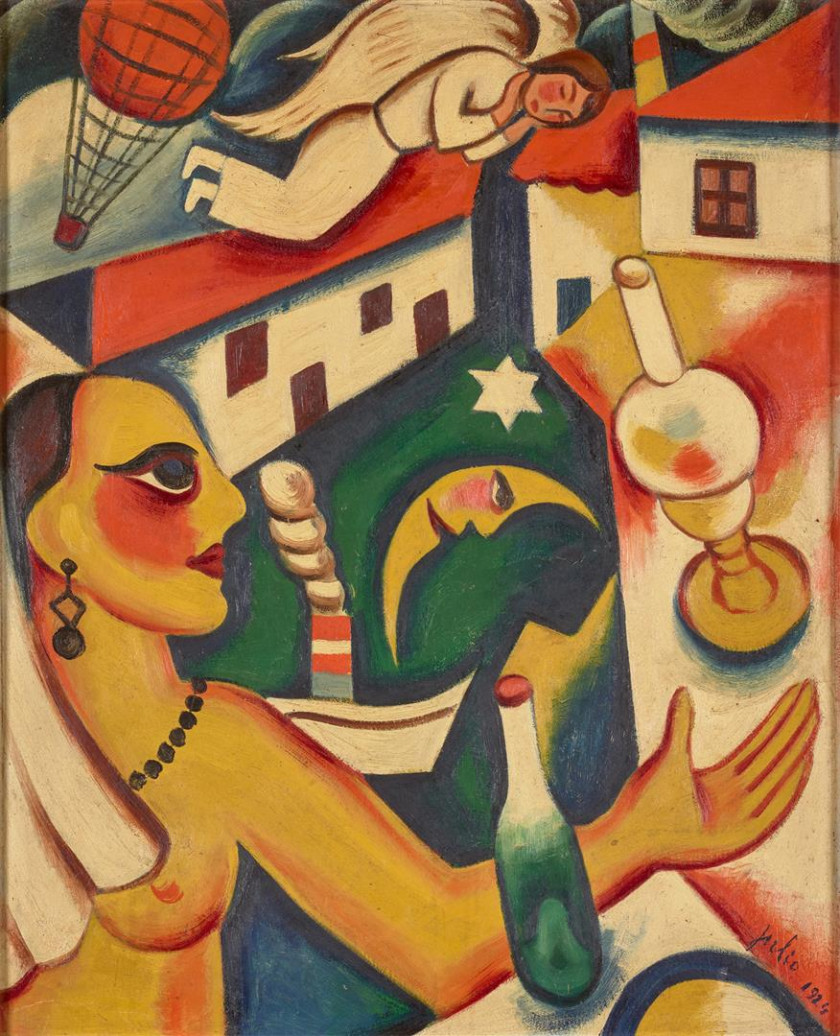Sinfonia da Tarde [Afternoon Symphony]
painting


1924
Oil on paper laid on platex
78 x 63 cm
Civil engineer, poet, illustrator and painter, throughout the 1920s Júlio dos Reis Pereira produced a series of works of social criticism, using the biting sarcasm of an expressionist language tempered with a oneirism inspired by Chagall, resulting in surreal compositions. At the same time, he also painted archetypes of women in an idealised vision of love and nature. As the main illustrator of the magazine Presença - of which his brother José Régio was one of the directors -, his work also reveals his ethical and aesthetic principles, namely in terms of his claim to plastic autonomy in the face of naturalist mimesis.
In this work of 1924, Júlio dos Reis Pereira, using vibrant colours and strong tonal contrasts, offers us one of his dream-like paintings, with a freedom of composition unprecedented for the time. Different types of elements converge and intertwine in a centripetal way: the house in the foreground, prolonged on the right side by white planes of a table with an armchair and a bottle, circumscribing to the centre a patio that is after all a sky - inhabited by a moon and a star - but also a sea - where a boat glides. In the foreground, on the left side of the composition, a woman in profile assumes the leading role in the composition and with her outstretched arm creates an ellipse connecting the parts, while in the sky flies a balloon and a sleeping white angel, clearly reminiscent of Chagall's winged figures.
The oneiric expressionism of Júlio dos Reis Pereira makes different realities coincide on the same plane of the canvas, exchanging their spectacular places of enunciation, at the same time converging various pictorial traditions of space construction. Despite the strong tonal contrasts, there is a general harmony in the chromatic range of this work: the rhythmic distribution of the colours gives cohesion to the composition, encouraging the eye to participate in the joy of its movement.
Luísa Cardoso